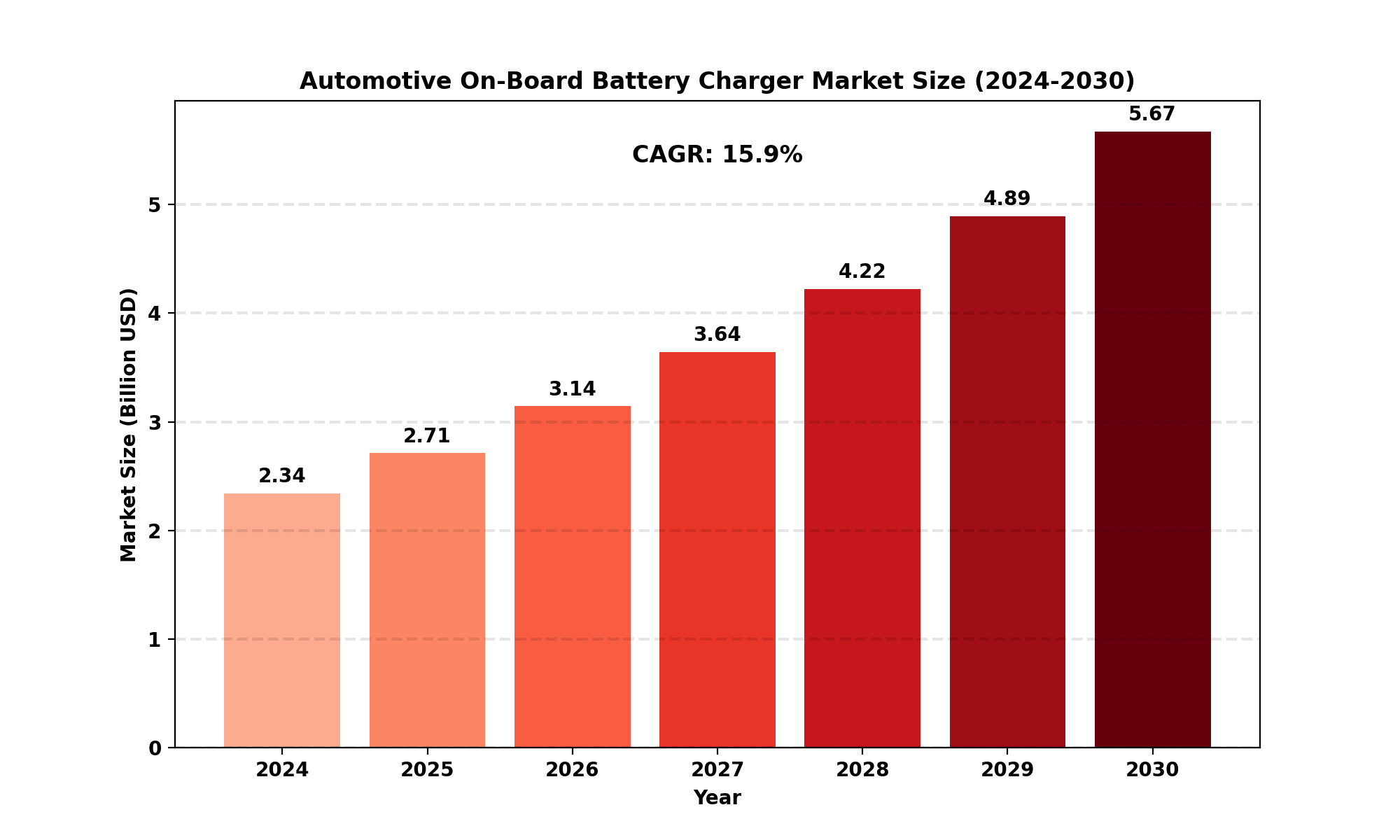TOP CATEGORY: Chemicals & Materials | Life Sciences | Banking & Finance | ICT Media

Download Report PDF Instantly
Report overview
The global Automotive On-Board Battery Charger market size was valued at US$ 2.34 billion in 2024 and is projected to reach US$ 5.67 billion by 2030, at a CAGR of 15.9% during the forecast period 2024-2030.
The United States Automotive On-Board Battery Charger market size was valued at US$ 567.3 million in 2024 and is projected to US$ 1.32 billion by 2030, at a CAGR of 15.1% during the forecast period 2024-2030.

Automotive On-Board Battery Chargers are built-in devices in electric and plug-in hybrid vehicles that convert AC power from the grid to DC power to charge the vehicle's high-voltage battery pack.
The global Automotive On-Board Battery Charger market is experiencing rapid growth, driven by the accelerating adoption of electric vehicles (EVs) and plug-in hybrid electric vehicles (PHEVs). In 2023, total unit sales reached 7.8 million, with battery electric vehicles (BEVs) accounting for 65% of market value. The market saw a 40% increase in demand for bi-directional chargers in 2023, enabling vehicle-to-grid (V2G) capabilities. Silicon-based chargers dominate with a 75% market share, but wide-bandgap semiconductor (SiC and GaN) based chargers are growing at 25% annually due to their higher efficiency and power density. Europe leads with a 35% market share due to stringent CO2 emission regulations, while China is the fastest-growing region at 18% CAGR. The industry is focusing on developing ultra-fast charging technologies, with a 50% increase in R&D investments for chargers capable of 350kW+ power output.
Report Overview
An on-board charger is responsible for charging the battery pack in a plug-in hybrid electricvehicle (PHEV).
This report provides a deep insight into the global Automotive On-Board Battery Charger market covering all its essential aspects. This ranges from a macro overview of the market to micro details of the market size, competitive landscape, development trend, niche market, key market drivers and challenges, SWOT analysis, value chain analysis, etc.
The analysis helps the reader to shape the competition within the industries and strategies for the competitive environment to enhance the potential profit. Furthermore, it provides a simple framework for evaluating and accessing the position of the business organization. The report structure also focuses on the competitive landscape of the Global Automotive On-Board Battery Charger Market, this report introduces in detail the market share, market performance, product situation, operation situation, etc. of the main players, which helps the readers in the industry to identify the main competitors and deeply understand the competition pattern of the market.
In a word, this report is a must-read for industry players, investors, researchers, consultants, business strategists, and all those who have any kind of stake or are planning to foray into the Automotive On-Board Battery Charger market in any manner.
Global Automotive On-Board Battery Charger Market: Market Segmentation Analysis
The research report includes specific segments by region (country), manufacturers, Type, and Application. Market segmentation creates subsets of a market based on product type, end-user or application, Geographic, and other factors. By understanding the market segments, the decision-maker can leverage this targeting in the product, sales, and marketing strategies. Market segments can power your product development cycles by informing how you create product offerings for different segments.
Key Company
Market Segmentation (by Type)
Market Segmentation (by Application)
Geographic Segmentation
Key Benefits of This Market Research:
Key Reasons to Buy this Report: